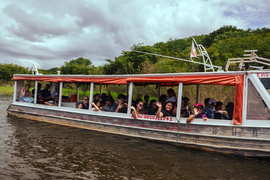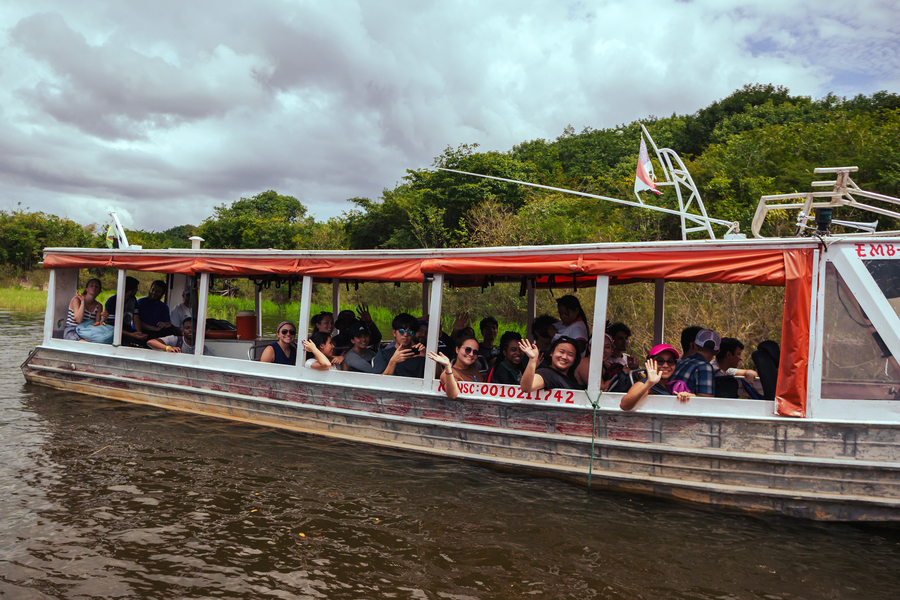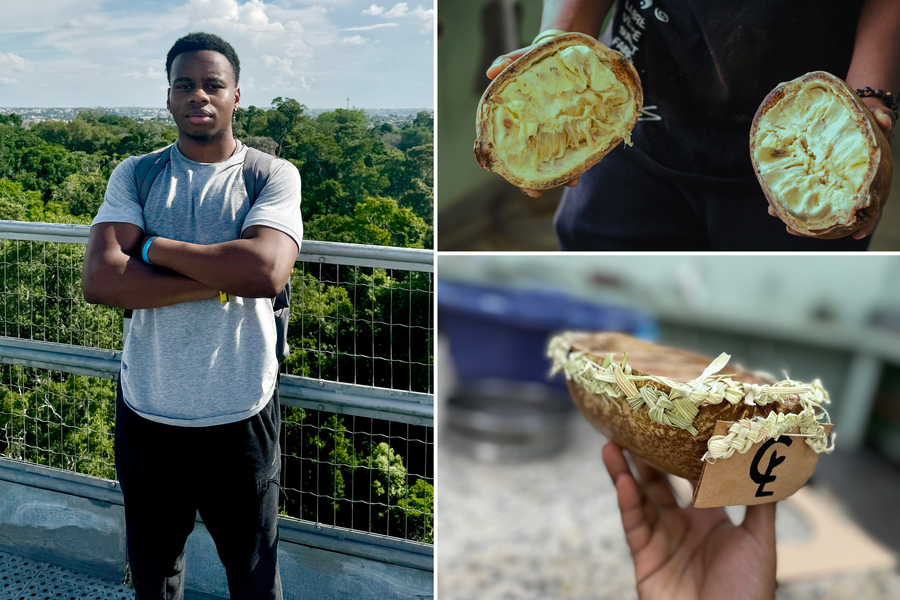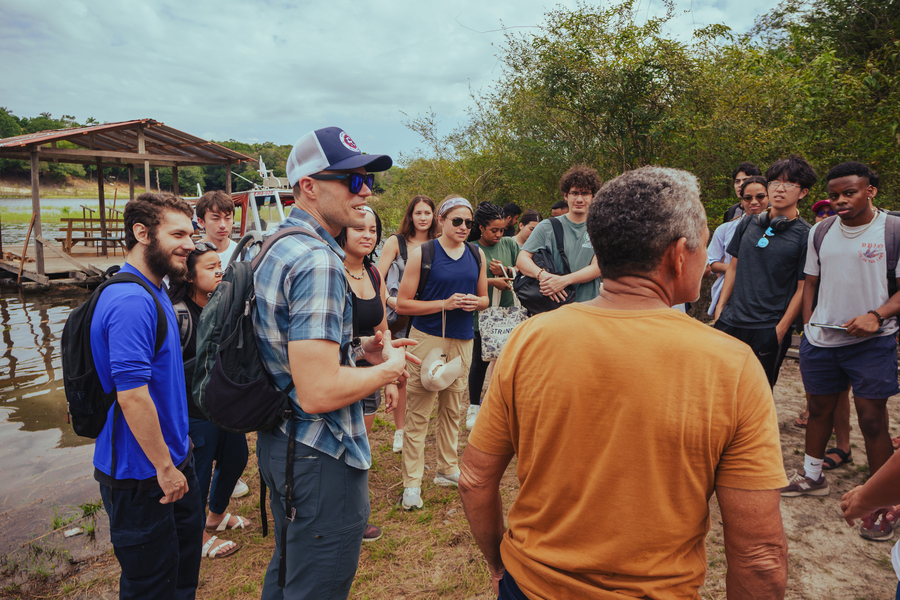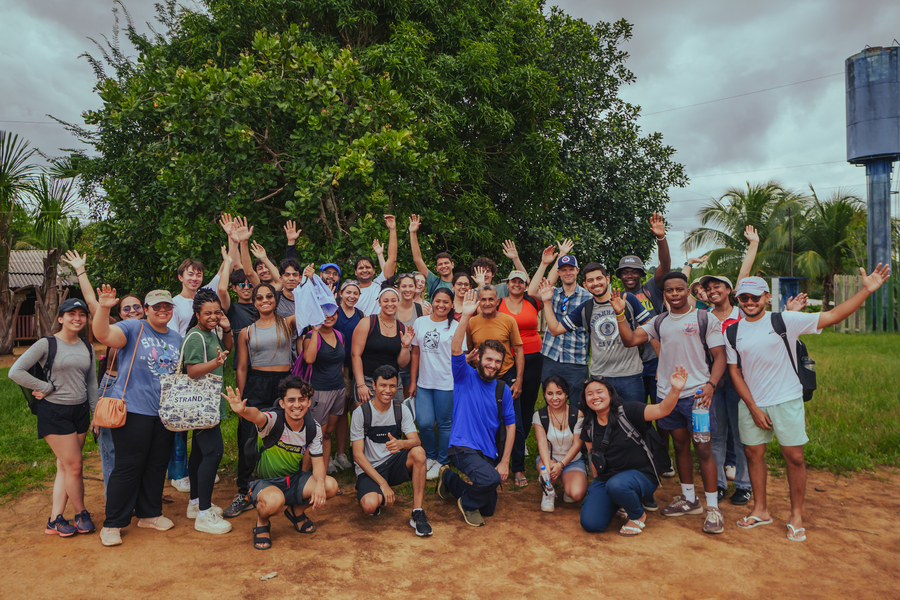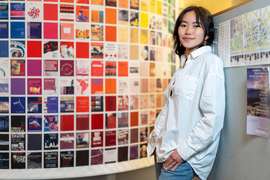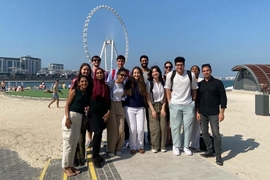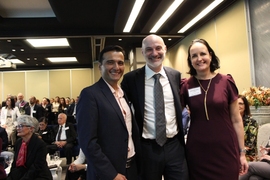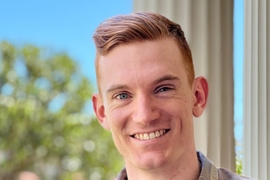This summer, a group of MIT students traveled to Sicily’s southeastern coast to learn about threats to local communities related to sea level rise. They visited ancient archeological sites that are in danger of being wiped out, and worked with local college students on preservation and adaptation techniques.
This past January, another group of MIT students travelled to South Africa to study the biology of HIV and learn about a local community’s public health challenges concerning the disease. Another group travelled to Spain and lived with local families in Madrid while studying Spanish literature, culture, and history.
Some lessons can’t be taught in the classroom. That’s the reasoning behind the MIT International Science and Technology Initiatives (MISTI) Global Classrooms program.
Led by MIT faculty members, some Global Classrooms focus on grand challenges such as climate, sustainability, and health, while others deal with language, culture, and society. But all Global Classrooms benefit from their location: MIT students gain a unique perspective on the topics they study by engaging with the local community.
“MISTI exists because we believe every graduate of MIT should be capable of connecting to and learning from colleagues all over the world,” MISTI Executive Director April Julich Perez says. “The types of problems MIT graduates will work on in their careers will require them to have an understanding of how people in different cultures might look at a problem and go about trying to solve it. This can’t be fully realized in a class on our Cambridge campus but requires an authentic global experience. We want to help our students widen their apertures to see new ways to design solutions within regional contexts. Global Classrooms help make that possible.”
Helping faculty teach
Global Classrooms arose organically from a campus need. For many years, MIT faculty have been taking students on trips around the world to learn from different communities. MISTI, with its expertise in designing global internships and other immersive learning experiences abroad, would often be tapped by faculty informally to provide their expertise.
About two years ago, MISTI decided to formalize this process by launching the MISTI Global Classrooms program. The program offers a variety of modalities to meet a range of needs across the Institute. For example, if a faculty member on campus is interested in taking students abroad, MISTI can provide advising and resources around handling travel logistics, safety, and learning in new places. On the other end of the spectrum, MISTI can serve as an implementation partner for Global Classrooms. In this capacity, MISTI program managers work with faculty members to structure their programs and help with finding partners abroad, student recruitment, selection, housing, and more. MISTI can also provide funding for certain Global Classrooms or help faculty members find funding.
An example is a Global Classroom in South Africa that is led by Bruce Walker, who is a professor of the practice in the Department of Biology as well as a core member of the Ragon Institute. Walker’s course has been going on in one form or another for more than 20 years. Since 2017, MISTI has partnered with Walker to provide support in a variety of ways.
Through the class, HST. 434 (Evolution of an Epidemic), students from across the Institute meet traditional healers, which are the first line of care for many locals. They also meet with mothers and their HIV-infected babies, young women at risk, local doctors and researchers, and more.
“It’s really important to get a chance to talk to young women at risk and really understand what their challenges are,” Walker says. “A lot of that has to do with lack of empowerment.”
Another recently launched Global Classroom is addressing sustainability in the Amazon. Andre Hamelberg ’24 traveled to Manaus, Brazil, in the Amazon region during the January Independent Activities Period (IAP) this past year. Working with local college students, he designed more sustainable packaging based on locally available materials.
“We had to find our way to communicate with each other, which was a really unique experience,” Hamelberg says. “A lot of us became really good friends. That will always stick with me.”
The experience led Hamelberg to return to Manaus this summer, where he is working with a local plastic manufacturer. It also changed Hamelberg’s perspective on his career.
“I have a long-term dream of becoming an entrepreneur, and I’m hoping I can work on improving sustainability,” Hamelberg says. “That was shaped from the Global Classroom program.”
A highlight for many students is getting an up-close look at the local culture.
“The program was a special opportunity,” Hamelberg says. “We really got to ingrain ourselves in the culture here, which I think was essential to our learning. We got the chance to be part of a small, tight-knit community.”
Helping students find their paths
MISTI’s team is careful to note that Global Classrooms are learning experiences rather than humanitarian missions.
“It’s not like we’re deploying students to go fix things all over the world,” Julich Perez says. “We’re deploying students to go learn about the nature of these challenges from local practitioners, researchers, faculty, and students. MISTI is very much trying to educate students and give them the skills to become changemakers in their future careers.”
Much of that learning is enabled by the setting of the Global Classroom.
“For every Global Classroom, the location is critical,” Julich Perez says. “For instance, if students are studying hydrology, we have a Global Classroom in Venice where students are studying the system that mitigates the sea level rise and its impact on the city. It’s very important for them to go and see the system for themselves and to work with local students on that project. Global Classroom is about that in-situ learning.”
Walker has seen firsthand how exposing students to problems can inspire them to contribute to solutions. He says the experience in his class has driven many Global Classroom alumni to work in public health.
“There’s no substitute for talking to the people that are actually being impacted by a disease,” Walker says. “It’s something that you don’t get in the classroom in terms of student understanding and seeing for themselves what the facilities look like, how constrained they are, chatting with people their own age that are in desperate situations. It opens up a whole new perspective.”
The Global Classrooms program also aligns well with MIT’s mission of equipping students to serve the world, says Julich Perez.
“MIT is all about solving big challenges, and the Global Classroom program is helping students understand those challenges and giving them the skills to be able to solve them in the future,” Julich Perez says.
